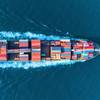United Nations Adopts High Seas Treaty
The UN’s 193 Member States have adopted a legally binding marine biodiversity agreement, the High Seas Treaty, following nearly two decades of fierce negotiations.
Adopted by the Intergovernmental Conference on Marine Biodiversity of Areas Beyond National Jurisdiction (BBNJ), the “high seas” treaty aims at taking stewardship of the ocean on behalf of present and future generations, in line with the Convention on the Law of the Sea.
The new agreement contains 75 articles that aim at protecting, caring for, and ensuring the responsible use of the marine environment, maintaining the integrity of ocean ecosystems, and conserving the inherent value of marine biological diversity.
“The ocean is the lifeblood of our planet, and today, you have pumped new life and hope to give the ocean a fighting chance,” said UN Secretary-General António Guterres.
While countries are responsible for the conservation and sustainable use of waterways under their national jurisdiction, the high seas now have added protection from destructive trends as pollution and unsustainable fishing activities.
More than 17 million metric tons of plastic entered the world’s ocean in 2021, making up 85 per cent of marine litter, and projections are expected to double or triple each year by 2040, according to the latest Sustainable Development Goals (SDG) report. According to UN estimates, by 2050, there could be more plastic in the sea than fish unless action is taken.
The treaty aims at strengthening resilience and contains provisions based on the polluter-pays principle as well as mechanisms for disputes. Under the treaty’s provisions, parties must assess potential environmental impacts of any planned activities beyond their jurisdictions.
The treaty includes increasing collaboration among regional seas organizations and regional fisheries management organizations.
The new agreement will enable the establishment of area-based management tools, including marine protected areas, to conserve and sustainably manage vital habitats and species in the high seas and the international seabed area.
The International Chamber of Shipping (ICS) welcomed the adoption, saying the agreement takes into account the IMO’s role and is intended to cover gaps in ocean governance to ensure that emerging high seas industries will be as well-regulated as shipping is. ICS has been representing the shipping industry in the discussions to ensure that the international maritime community is engaged, and that the industry’s unique nature is considered.
Emily Rowley, ICS Policy Manager (Legal), has represented ICS at the United Nations on BBNJ for over five years and commented: “We are delighted that after more than two decades of work the High Seas Treaty has been formally adopted. There is still a way to go of course before it comes into effect, as 60 member states need to ratify, but this is without question a significant moment and should be celebrated.”













